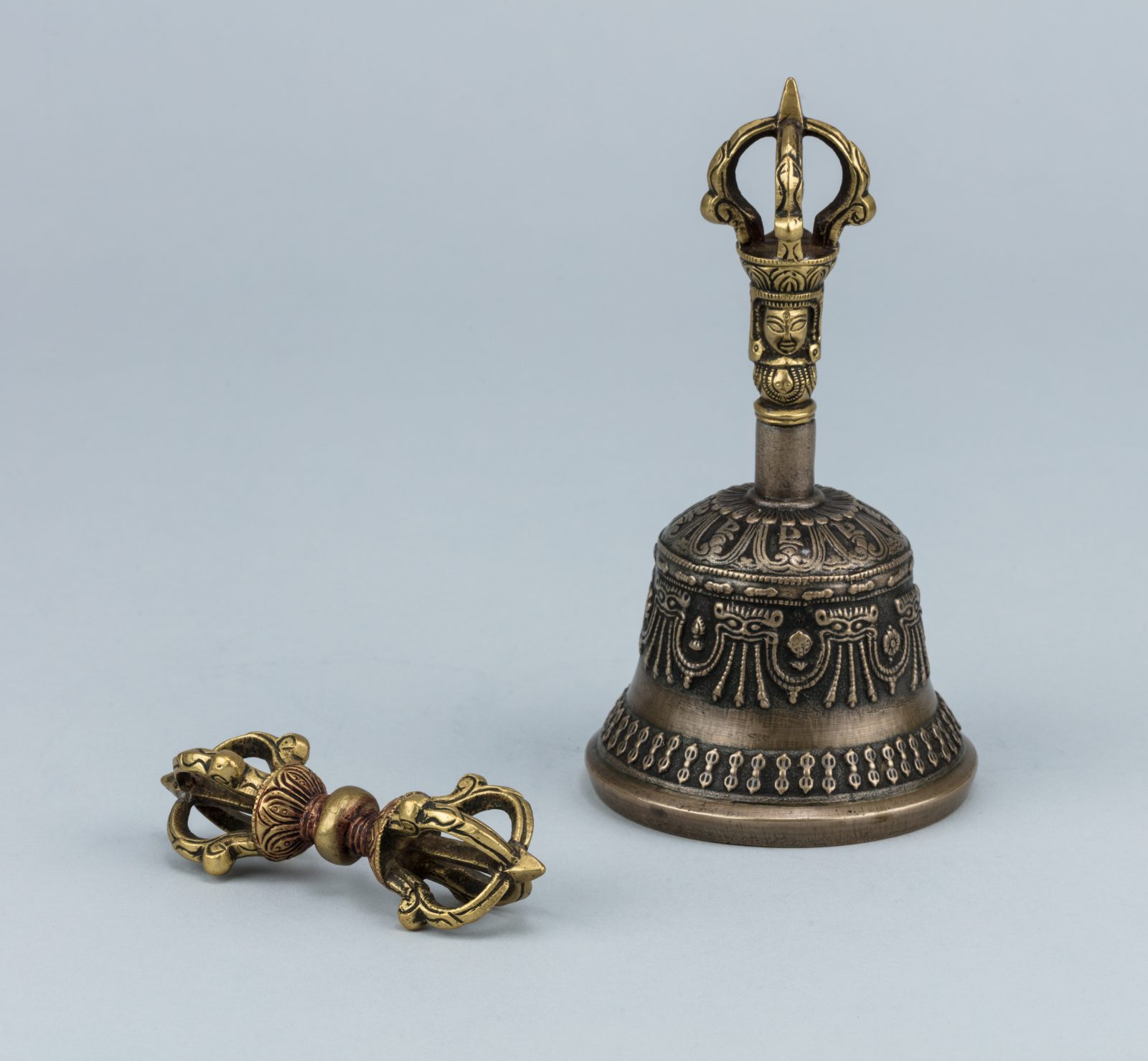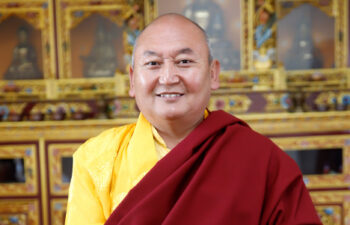

This week’s meditation session is led by Tulku Pema Rigtsal Rinpoche and the theme is Love.

Five-prong Bell & Dorje Set; Probably Urga or Dolonor, Mongolia; ca. late 19th century; Silver, metal (Li, five-metal compound); Rubin Museum of Himalayan Art, Gift of Phillip J. Rudko; C2014.7.4a-b
The vajra and bell are the most important ritual objects of Tibetan Buddhism. The vajra represents method, and the bell represents wisdom. The vajra is a symbol of the indestructible nature of the ultimate truth. It’s synonymous with emptiness.
In Buddhism bells have many important meanings. They are often used to summon people to prayer as they can be heard at a great distance. The sound of the bell is also used to inform deities. Bells of all sizes are at the entrances of temples, which devotees can ring for blessings.

Tulku Pema Rigtsal Rinpoche is the Supreme Head of Namkha Khyung Dzong Monastery in Humla, Nepal. At the age of three he was recognized by Dudjom Rinpoche as the reincarnation of “Chimed Rinpoche,” who is the emanation of the Great Indian Siddha “Dampa Sangye” and spiritual head of the renowned Shedphel Ling Monastery in Ngari, Tibet. In 1985 he reconstructed the Namkha Khyung Dzong Monastery in Humla, Nepal, and has taught the 13 major philosophical texts (Shungchen Chusum) for 24 years. His religious guidance has inspired hundreds of ascetics and other practitioners in Tibet.
Rinpoche has studied the Vajrayana tradition of the Nyingma lineage from renowned spiritual masters: Dudjom Rinpoche, Dilgo Khyentse Rinpoche, Dodrupchen Rinpoche, Penor Rinpoche, Thinley Norbu Rinpoche, Trulshik Rinpoche, and Domang Yangthang Rinpoche.
Get the latest news and stories from the Rubin, plus occasional information on how to support our work.